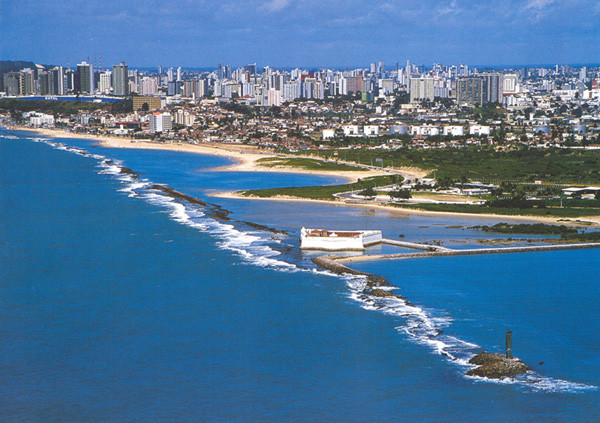Rising high above the dunes, Natal overlooks its long and beautiful coastline, turning its back to the Potengi River – the ancient Rio Grande do Norte, which gave its name to the captaincy, the province and, finally, the state. The city of Natal developed on the left bank of the […]
Natal
Natal is the starting point for those who want to explore the famous dunes of Genipabu, north of the Potengi River, and the magnificent coastline of the south and north.
Known as the City of the Sun, Natal enchants with the beauty of its beaches
On the Brazilian map, Rio Grande do Norte is literally where the wind turns. And the strong air that blows through here moulds the Potiguar coastline, forming a landscape of beautiful cliffs and dunes. In the capital Natal, the wind cools the equatorial heat and guarantees sunshine for most of the year. Even when it rains, in a short time there is no more shadow of the heavy clouds, and the day goes on sunny, as if nothing had happened. Hence the title of City of the Sun.
The beaches are what tourists seek most in Natal. Here is the place to enjoy the coast intensely, in a unique experience that involves not only lying in the sun, but also contemplating and exploring its natural beauties and enjoying the sea walks, which bring tourists closer to its marine riches, around the coral reefs.
The surrounding area has attractions such as the dunes of Genipabu, the rare beauty of the Parrachos de Maracajaú, the charm of Pipa beach and, on the way, even the curious largest cashew tree in the world. All these stops make up a complete itinerary of fun in a place where apparently only summer is.
Natal is small compared to other capitals in the Northeast. And for this reason, it preserves a certain constant climate of a summer city. Ponta Negra beach, with Morro do Careca as its postcard, epitomises this feeling. A favourite with tourists, the place is where the largest number of accommodation options are concentrated. The Via Costeira beach is the stronghold of those looking to combine luxury with tourism.
The tables in Natal are full of good food. Natal’s flavours spice up your stay with its abundant prawns, fish and sun-dried meat. And those who like to try typical recipes will enjoy the ginga with tapioca on Redinha beach.
Art, history and culture complete the experience of those who go to Natal. In the Cidade Alta and Ribeira neighbourhoods are the buildings, museums and churches that preserve the history and rich folklore of one of the oldest capitals in the Northeast, inaugurated on 25 December 1599. Its relationship with the date that refers to the birth of Christ is not only in the name. The Forte dos Reis Magos, another historical attraction (inaugurated on the day of the Three Kings, 6 January 1681), preserves the city’s landmark. Not for nothing, the image of the kings with the guiding star is the symbol of the city, displayed on its entrance portico.




















